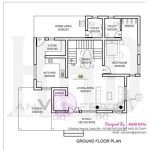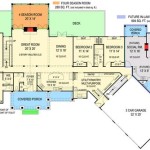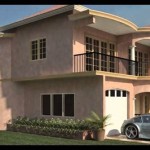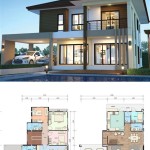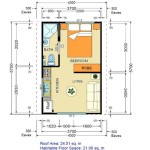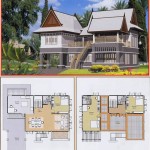How to Make a House Plan as per Vastu
Vastu Shastra, an ancient Indian system of architecture, translates to the "science of architecture." It aims to harmonize the built environment with nature, ensuring positive energy flow and promoting well-being for the occupants. Creating a house plan according to Vastu principles involves strategically orienting and arranging spaces within the structure to align with cosmic energies. While engaging a Vastu expert is advisable for a comprehensive plan, understanding the fundamental principles can aid in the initial design and planning stages.
This article provides a guide to some core Vastu principles that can be incorporated into a house plan. It is crucial to remember that Vastu is a complex system, and interpretations can vary. This information should be considered a starting point for further research and consultation with qualified professionals.
Directional Considerations
Vastu places significant emphasis on cardinal directions: North, South, East, and West, along with the intermediate directions. Each direction is associated with specific deities and energies, influencing the suitability of that direction for particular activities and rooms.
The northeast direction is considered highly auspicious, linked to the deity Shiva and the element of water. Ideally, this area should be kept clean, uncluttered, and open. It is considered suitable for the entrance, prayer room (pooja room), or a water feature. Avoid heavy structures or toilets in the northeast, as these are believed to obstruct positive energy flow.
The southeast direction is associated with the element of fire and is governed by the deity Agni. The kitchen is ideally placed in this direction, facilitating the smooth flow of fire energy related to cooking and nourishment. Electrical appliances and sources of heat are also appropriately situated in the southeast.
The southwest direction, governed by the deity Nirriti, is considered the location for stability and grounding. The master bedroom is typically placed in this area, as it is believed to promote stability in the lives of the occupants. Heavy objects, such as wardrobes and storage, can also be placed in the southwest to further enhance stability.
The northwest direction, associated with the element of air and governed by the deity Vayu, is considered suitable for the guest room, children's room, or the drawing room. Movement and change are associated with this direction, making it appropriate for spaces that are not intended for permanent residency or long-term activities.
The center of the house, known as the Brahmasthan, is considered the most sacred and powerful zone. It should be kept open, uncluttered, and free from any obstructions. Load-bearing walls, toilets, or heavy furniture should be avoided in the Brahmasthan to allow energy to flow freely throughout the house. A courtyard or an open space is considered ideal for the Brahmasthan.
Room Placement and Functionality
In addition to directional considerations, Vastu also provides guidelines for the placement of specific rooms based on their function and the activities they accommodate.
The entrance of the house is considered the gateway for energy to enter the dwelling. An east or north-facing entrance is considered highly auspicious, facilitating the entry of positive energy. The entrance should be well-lit, inviting, and free from obstacles. Avoid placing the entrance directly facing a wall or another building.
The living room is a space for socializing and relaxation. It can be located in the north, east, or northeast direction. The furniture should be arranged in a way that allows for easy flow and interaction. The living room should be well-ventilated and receive ample natural light.
The kitchen, as mentioned earlier, is ideally located in the southeast direction. The cooking stove should be placed in a way that the person cooking faces east. Avoid placing the kitchen directly opposite the main entrance or next to a toilet.
The bedrooms should ideally be located in the southwest (master bedroom), northwest (guest room), or west directions. The bed should be positioned in a way that the head faces south or east while sleeping, which is believed to promote restful sleep. Avoid placing mirrors directly opposite the bed.
The bathroom and toilet should ideally be located in the north or west direction. Avoid placing them in the northeast, southeast, or southwest corners of the house. Ensure proper ventilation in the bathrooms to prevent the accumulation of negative energy.
The study room should be located in the east or north direction. The study table should be placed in a way that the person studying faces east or north. A calm and clutter-free environment is essential for a productive study room.
The staircase should be located in the south, west, or southwest direction. Avoid placing it in the center of the house or in the northeast corner. The staircase should ideally move in a clockwise direction.
Incorporating the Five Elements
Vastu Shastra harmonizes the five elements of nature: Earth, Water, Fire, Air, and Space (Ether). Balancing these elements within the house is crucial for creating a harmonious and supportive environment.
The Earth element is associated with stability, grounding, and security. This element is primarily reflected in the southwest direction and can be enhanced by using earthy tones, heavy furniture, and solid structures in this area.
The Water element is associated with purity, fluidity, and abundance. This element is primarily reflected in the northeast direction and can be enhanced by incorporating water features, fountains, or using blue and white colors in this area. Avoid placing water features in the south direction.
The Fire element is associated with energy, passion, and transformation. This element is primarily reflected in the southeast direction and can be enhanced by using warm colors, incorporating lighting, and placing the kitchen in this area. Avoid placing water sources or water features in the southeast.
The Air element is associated with movement, communication, and growth. This element is primarily reflected in the northwest direction and can be enhanced by ensuring proper ventilation, using light colors, and creating open spaces in this area. Avoid blocking the flow of air with heavy furniture or clutter.
The Space (Ether) element is associated with vastness, clarity, and expansion. This element is primarily reflected in the center of the house (Brahmasthan) and can be enhanced by keeping this area open, uncluttered, and free from any obstructions. The more open and spacious the Brahmasthan, the better the flow of energy throughout the house.
Incorporating these Vastu principles into a house plan can contribute to a more harmonious and balanced living environment. It is crucial to remember that these are general guidelines, and the specific requirements of each house will vary depending on the individual circumstances. Consulting with a qualified Vastu consultant is always recommended to ensure that the house plan is tailored to the needs and preferences of the occupants.
Furthermore, modern living constraints and site limitations might necessitate compromises. Communication with the Vastu consultant is vital to find the best possible solution while adhering to the core principles as closely as feasible. The ultimate goal is to create a space that promotes well-being, prosperity, and positive energy for the residents.

Vastu Model Floor Plans For North Direction

The Science Of Vastu Shastra Way To Plan Your House Happho

House Plan According To Vastu Shastra N Plans Luxury

East Facing House Plan Vastu For
Wonderful 2bhk South Facing House Plans As Per Vastu Shastra
1bhk Tiny House Plans As Per Vastu Shastra

38x50 G 2 House Design As Per Vastu Plan And Designs Books

Vastu Shastra For Building Construction Benefits Tips And Limitations

70x40 G1 Home Design As Per Vastu Shastra House Plan And Designs Books

This Is South Facing House Plan As Per Vastu Shastra The Land Area Of 47 3 N Plans Construction


